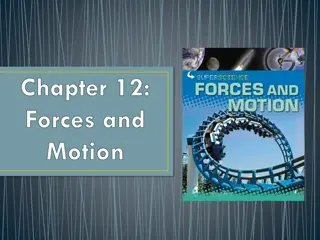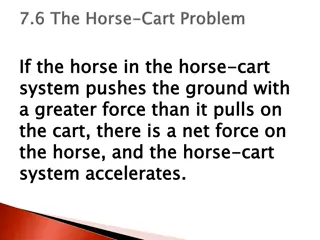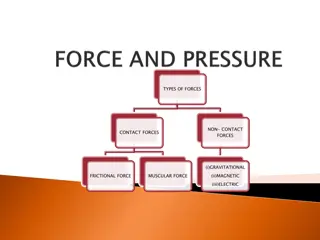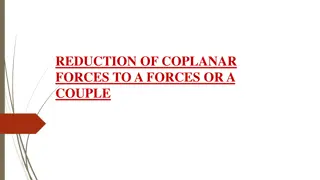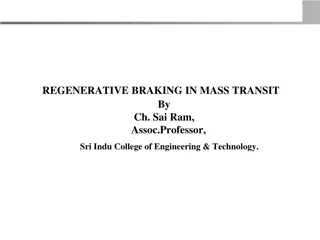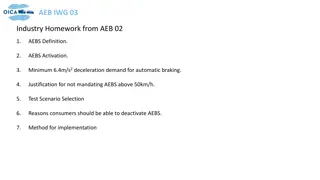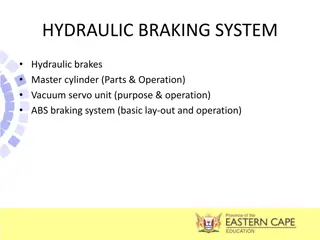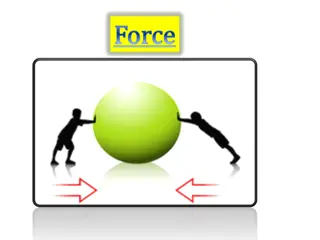Forces and Braking Essentials
In this lesson, explore the impact of gravitational forces on weight, understand stopping distances in vehicle dynamics, and learn about factors affecting braking. Discover why brakes heat up during use and how weight and mass change when moving from Earth to the Moon. Dive into the relationship between reaction time and braking distance, and grasp the importance of tire condition and road surface in braking efficiency.
Download Presentation

Please find below an Image/Link to download the presentation.
The content on the website is provided AS IS for your information and personal use only. It may not be sold, licensed, or shared on other websites without obtaining consent from the author.If you encounter any issues during the download, it is possible that the publisher has removed the file from their server.
You are allowed to download the files provided on this website for personal or commercial use, subject to the condition that they are used lawfully. All files are the property of their respective owners.
The content on the website is provided AS IS for your information and personal use only. It may not be sold, licensed, or shared on other websites without obtaining consent from the author.
E N D
Presentation Transcript
CwK Wednesday, 16 April 2025 Forces and Braking Do Now Activity A rock on Earth has a mass of 15kg. g on Earth = 9.8 N/kg. Calculate the weight of the rock on Earth and state the units. What would happen to the mass and the weight of the rock if it was moved to the surface of the Moon?
Self Assess A rock on Earth has a mass of 15kg. g on Earth = 9.8 N/kg. Calculate the weight of the rock on Earth and state the units. 15 x 9.8 = 147 N What would happen to the mass and the weight of the rock if it was moved to the surface of the Moon? The mass would stay the same but the weight would decrease due to a smaller gravitational field.
Progress Indicators Good Progress Define stopping distance of a vehicle Describe the factors that affect thinking distance and braking distance. Outstanding Progress Explain why brakes get hotter when they are applied Last Lesson: Terminal Velocity This Lesson: Forces and Breaking Next Lesson: Momentum
Stopping Distance Thinking distance is the distance the vehicle travels during the time the driver sees the hazard and applies the break (reaction time) Braking distance is the distance the vehicle travels after the brakes are applied until it comes to a complete stop, as a result of the braking force. Stopping distance = thinking distance + braking distance
Factors that affect thinking distance Reactions vary from person to person, typical values range from 0.2s to 0.9s How fast you are going Tiredness Drugs Alcohol Distractions in the car may also affect reaction time
Factors that affect braking distance How fast you re going How effective your brakes are How good the tyres are Road surface e.g. ice
Why do brakes get hot? When a force is applied to the brakes of a vehicle work is done by the friction force between the brakes and the wheel which reduces the kinetic energy of the vehicle, and the temperature of the brakes increases. Energy transfer takes place here. The greater the speed of a vehicle and the greater the mass of the vehicle the greater the braking force needed to stop the vehicle in a certain distance.
Dangers of Large Decelerations The greater the braking force, the greater the deceleration of the vehicle. Large decelerations may lead to brakes overheating and/or loss of control. If the deceleration is too large or too quick, then a higher proportion of the stopping force will transfer to the passenger, which could cause physical damage to them.


